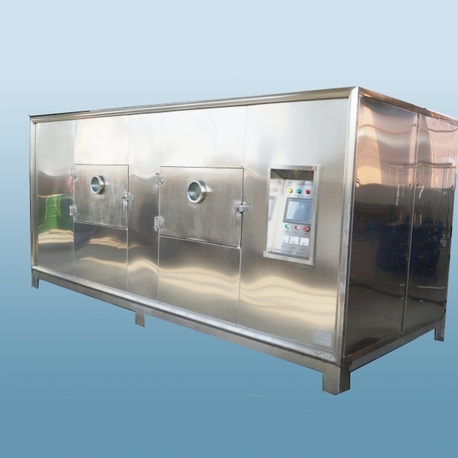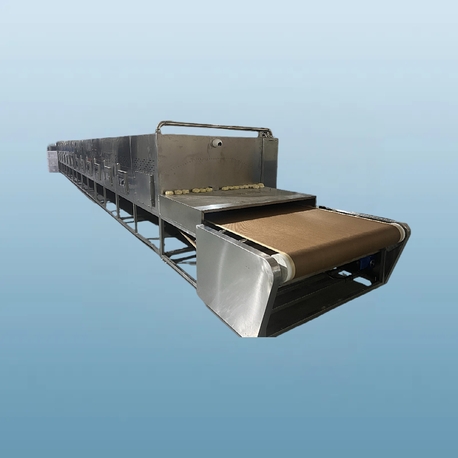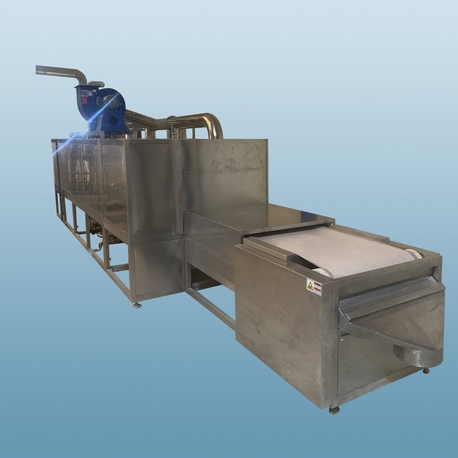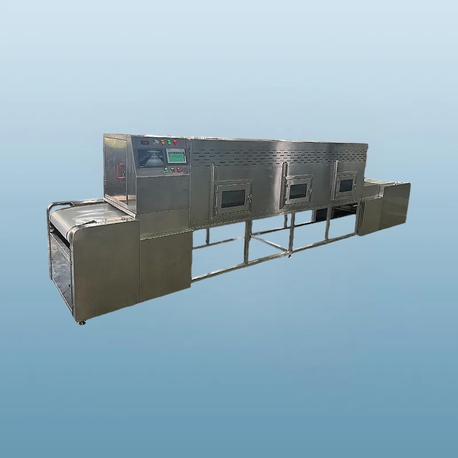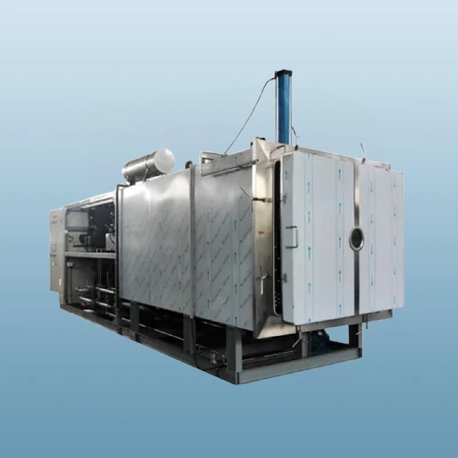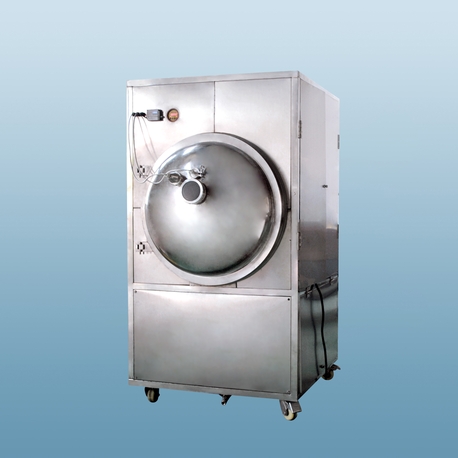When walking through the aisles of a grocery store, we see neatly packaged dried mangoes, apple chips, and instant vegetable powders. Behind these products lies a crucial piece of industrial equipment: the fruit and vegetable dehydrator. For food processors, agricultural cooperatives, and ingredient manufacturers, selecting the right commercial-scale dehydration system is a significant capital expenditure decision. It directly impacts product quality, operational efficiency, and ultimately, profitability. This article delves into the seven essential factors you must consider to make an informed investment in an industrial fruit and vegetable dehydrator.
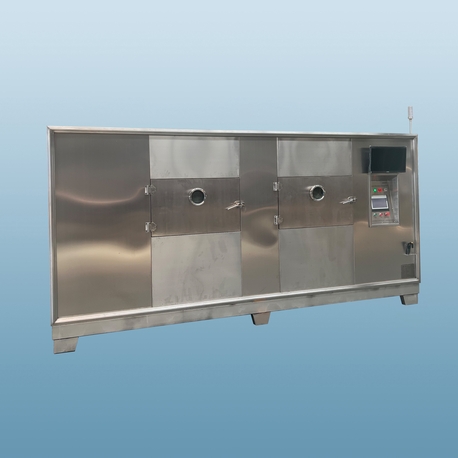
1. Understanding Dehydration Technology: The Core of the Process
At its heart, a fruit and vegetable dehydrator works by circulating heated air at low temperatures over prepared produce. This process gently removes moisture, inhibiting the growth of microorganisms and enzymes that cause spoilage. The key is to remove water while preserving the food's nutritional integrity, flavor, and color as much as possible.
Industrial systems are far more sophisticated than their domestic counterparts. They feature precise control systems for temperature and airflow, robust construction from food-grade materials, and high-capacity loading systems. The primary goal is to achieve uniform drying throughout all batches, which is a major challenge at a large scale. A well-designed fruit and vegetable dehydrator is engineered to overcome this, ensuring every piece of kale or slice of pineapple from the same batch has identical moisture content and quality.
2. Capacity and Throughput: Matching Volume to Demand
The first practical question to ask is: "How much do I need to dry, and how quickly?" The capacity of an industrial fruit and vegetable dehydrator is paramount. It's not just about the physical size of the unit, but its throughput—the amount of raw produce it can process from a wet to a dry state in a 24-hour period.
Batch Dryers: Ideal for smaller operations, seasonal products, or processors who need flexibility to switch between different products frequently. Tray dryers are a common type of batch fruit and vegetable dehydrator.
Continuous Dryers: Suited for high-volume, single-product operations. Conveyor belt dryers, for instance, allow for raw material to be continuously fed in one end and finished product to be discharged from the other, enabling non-stop operation. This is a common choice for large-scale carrot or onion drying.
Underestimating your capacity needs can lead to production bottlenecks, while overestimating results in wasted energy and floor space.
3. Heat Source and Energy Efficiency: The Cost of Operation
The method used to generate heat is a major determinant of your long-term operating costs. An energy-efficient fruit and vegetable dehydrator can save thousands of dollars annually.
Electric: Clean, easy to control, and simple to install. However, electricity is often the most expensive energy source per unit of heat.
Natural Gas/Propane: Typically more cost-effective than electricity for large-scale operations. They require proper ventilation and gas line installation but offer lower fuel costs.
Steam: Common in large food plants where a central boiler is already available. Highly efficient and allows for precise temperature control.
Hybrid and Heat Pump Systems: The latest advancement in fruit and vegetable dehydrator technology. Heat pump dryers are extremely energy-efficient as they recycle heat within the system, though they may have a higher upfront cost.
When comparing models, always calculate the estimated energy consumption per kilogram of water removed.
4. Airflow Design: The Secret to Uniform Drying
If heat is the engine of dehydration, airflow is the steering wheel. Proper, uniform airflow is the single most critical factor in preventing "case hardening" (where the outside of a piece dries too quickly, sealing in moisture) and ensuring consistent product quality.

There are two main airflow designs in an industrial fruit and vegetable dehydrator:
Horizontal Airflow: Air moves horizontally across the trays or conveyor. This can sometimes lead to uneven drying if the system is not perfectly balanced.
Vertical Airflow: Air moves vertically through the stacked trays. This design often promotes more uniform drying as the air is forced through each layer consistently.
The best fruit and vegetable dehydrator for your application will have an airflow system engineered for your specific product types, whether they are leafy herbs, dense root vegetables, or juicy fruit slices.
5. Control and Automation: Precision and Reproducibility
Modern industrial drying is a science, not an art. A high-quality fruit and vegetable dehydrator will feature a Programmable Logic Controller (PLC) with a touchscreen interface. This allows operators to create and save precise drying programs for different products.
Why is this vital?
Reproducibility: The dried apple chips you produce today will be identical to the ones you produce next month.
Optimization: You can fine-tune temperature ramps and humidity controls to maximize nutrient retention and flavor.
Reduced Labor: Automated cycles reduce the need for constant operator intervention and lower the risk of human error.
6. Construction and Hygiene: Built to Last and Easy to Clean
An industrial food processing environment is demanding. Your fruit and vegetable dehydrator must be built to withstand constant use and rigorous cleaning protocols. Look for the following:
Materials: The interior and all product-contact surfaces should be made of high-grade, corrosion-resistant stainless steel (e.g., AISI 304 or 316).
Sanitary Design: Seams should be welded and polished, not bolted. The unit should have minimal ledges or crevices where food particles can accumulate. Easy access doors for inspection and cleaning are a must.
Durability: The motors, fans, and electrical components should be from reputable industrial suppliers to ensure reliability and a long service life.
7. Scalability and Future-Proofing
Your business needs will evolve. When investing in a fruit and vegetable dehydrator, consider its place in your long-term growth strategy. Can the system be modularly expanded? Is the manufacturer known for providing technical support and spare parts for many years? Choosing a fruit and vegetable dehydrator from a company with a robust portfolio allows you to scale your drying capacity in line with your production growth.
Selecting an industrial fruit and vegetable dehydrator is a complex but critical decision. By thoroughly evaluating these seven factors—Technology, Capacity, Energy, Airflow, Control, Construction, and Scalability—you can move beyond a simple price comparison. You will be equipped to choose a system that becomes a reliable, efficient, and profitable cornerstone of your food processing operation, delivering high-quality dried products that meet the stringent demands of the global market.
Frequently Asked Questions (FAQ)
Q1: What is the average lifespan of a well-maintained industrial fruit and vegetable dehydrator?
A1: A high-quality industrial fruit and vegetable dehydrator, constructed from stainless steel and subjected to a regular preventive maintenance schedule, can have a operational lifespan of 15 to 20 years or more. The longevity heavily depends on the operating environment, the corrosiveness of the products being dried, and the consistency of upkeep.
Q2: How does an industrial dehydrator differ from a freeze dryer for preserving fruits and vegetables?
A2: The core difference lies in the process. A fruit and vegetable dehydrator uses low heat and airflow to evaporate moisture, resulting in a leathery or crisp texture. Freeze drying (lyophilization) first freezes the product and then uses a vacuum to sublimate the ice directly into vapor. Freeze drying better preserves the original shape, color, and nutrients but is significantly more expensive in terms of both equipment and energy costs.
Q3: Can the same dehydrator be used for both fruits and herbs?
A3: Yes, an industrial fruit and vegetable dehydrator can typically process both, but not necessarily in the same batch. Fruits, with their high sugar and moisture content, often require different temperature and airflow settings compared to delicate herbs, which can lose their volatile oils at high temperatures. Using the programmable features to create specific recipes for each product type is the standard practice.
Q4: What safety features should I look for in this equipment?
A4: Key safety features for an industrial fruit and vegetable dehydrator include over-temperature protection to prevent fire hazards, motor overload protection, properly insulated electrical panels, and emergency stop buttons. For gas-fired units, flame failure devices and ventilation monitors are essential.
Q5: Is it possible to retrofit an older dehydrator with modern control systems?
A5: In many cases, yes. Retrofitting an older fruit and vegetable dehydrator with a new PLC-based control system is a common way to improve precision, reproducibility, and energy efficiency without the cost of a completely new unit. It is best to consult with the original equipment manufacturer or a specialized industrial automation provider to assess feasibility.


